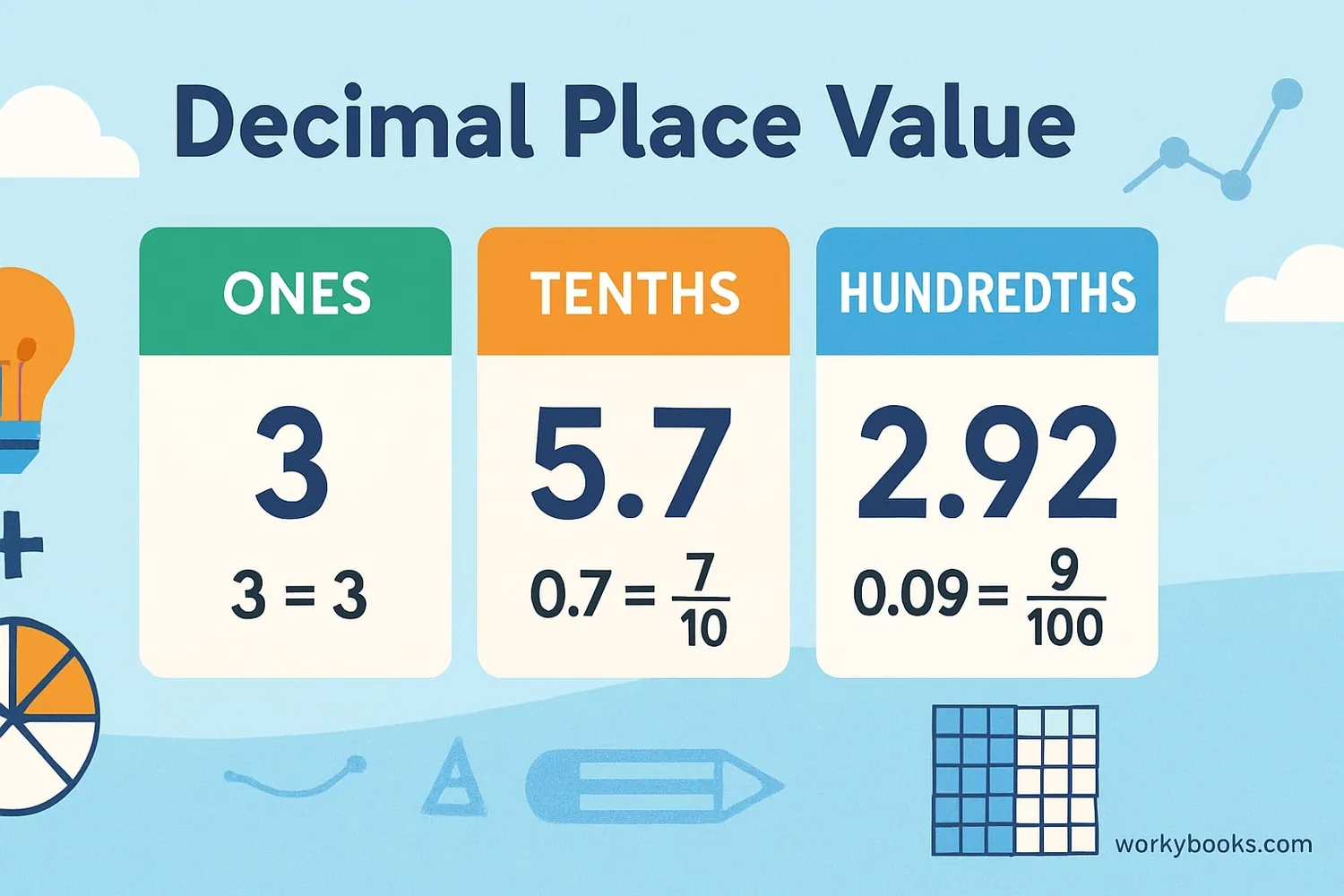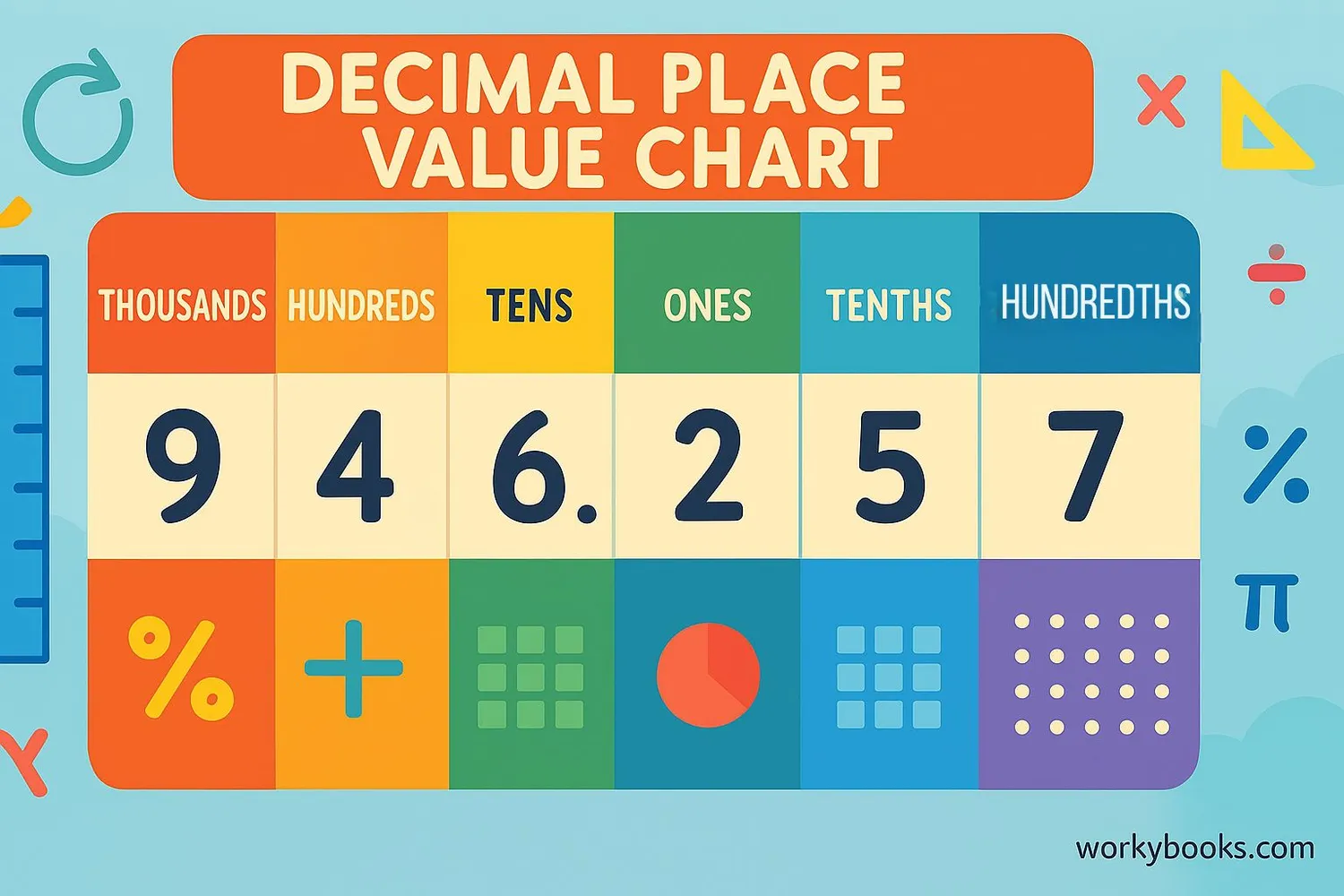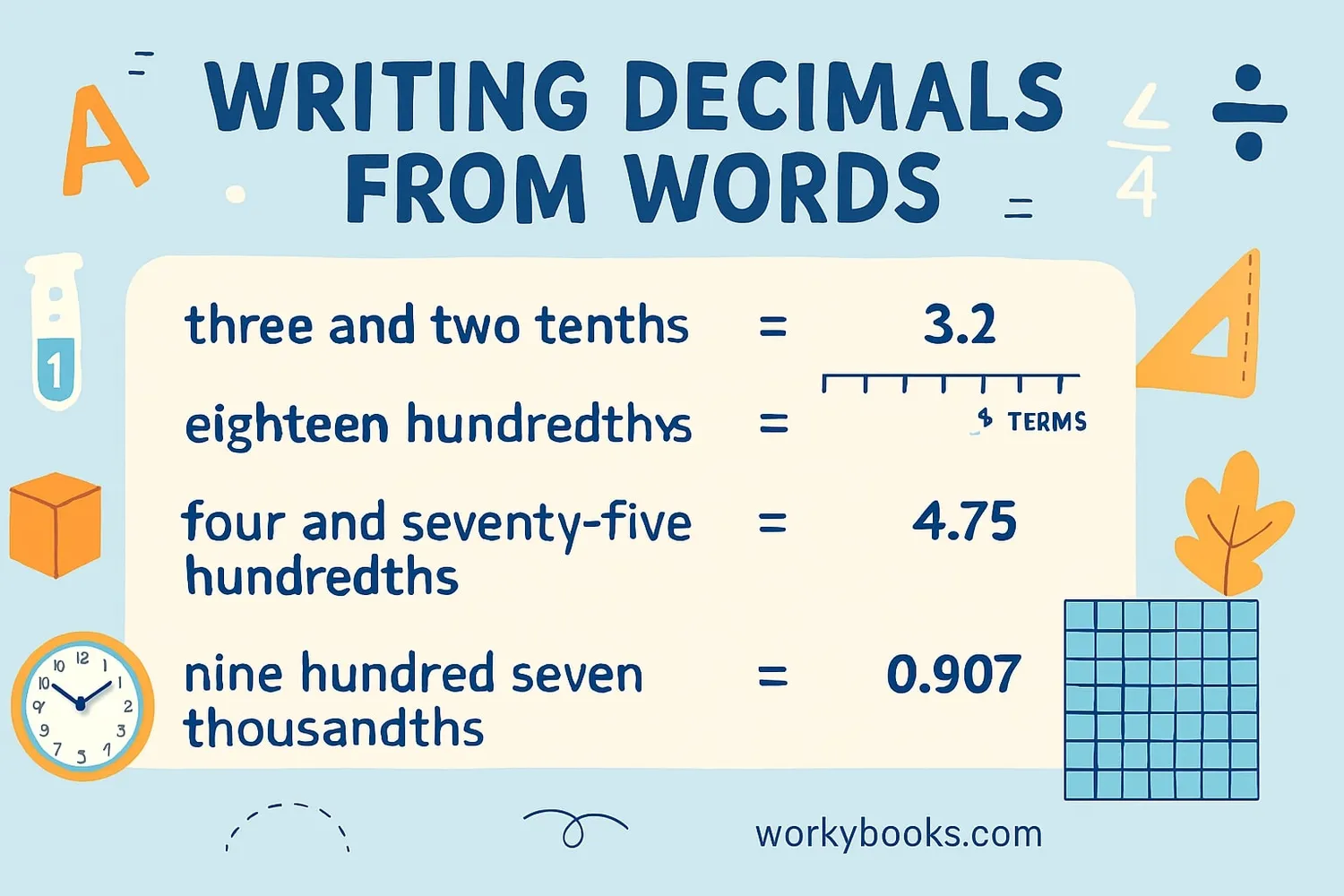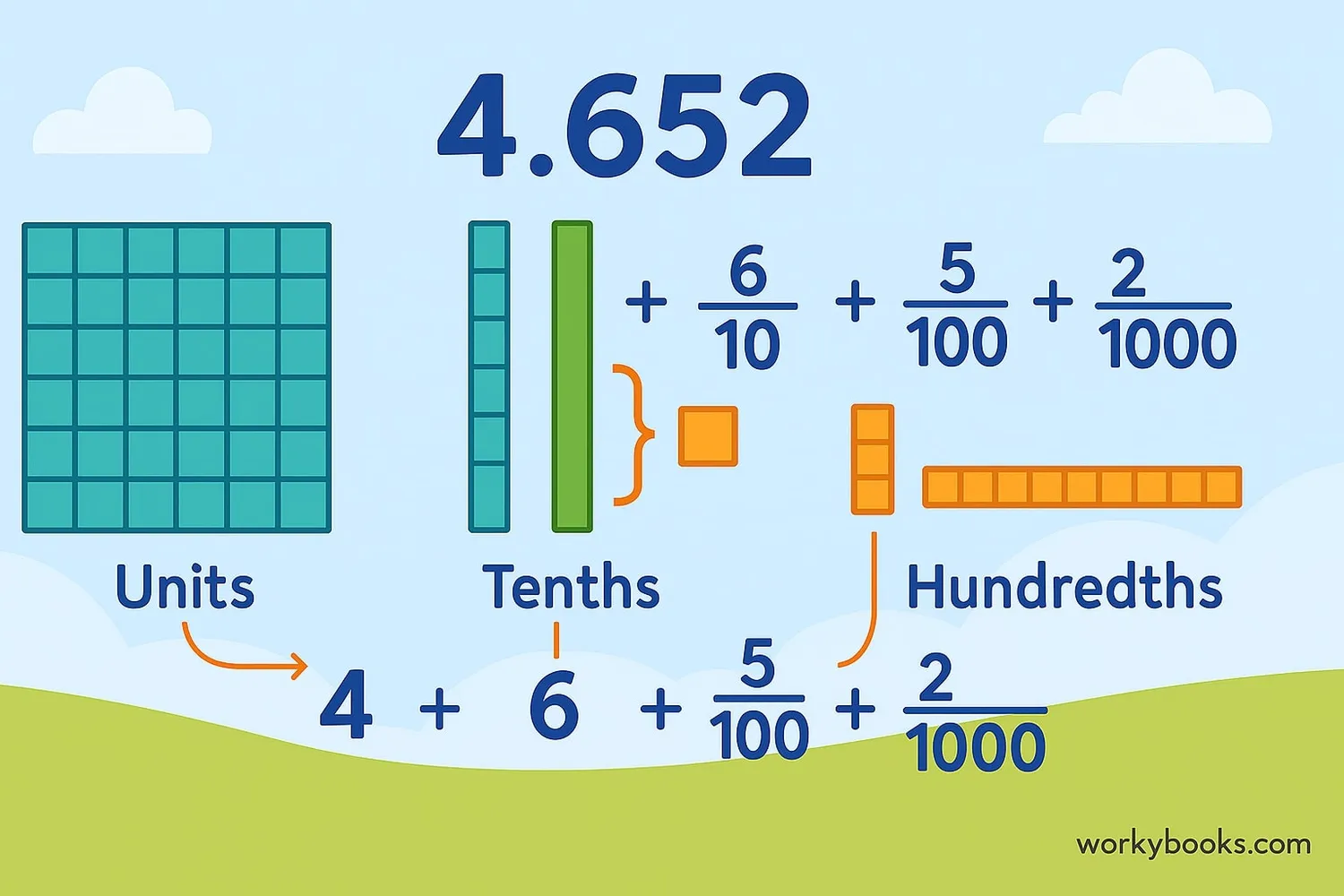Decimal Place Value - Definition, Examples, Quiz, FAQ, Trivia
Learn how decimal numbers work with place value charts, examples, and practice activities
What is Decimal Place Value?

Decimal place value helps us understand the meaning of each digit in a decimal number. A decimal point separates the whole number part from the fractional part. Each position to the right of the decimal point represents a fraction of a whole number.
Key terms:
- Decimal point: The dot that separates the whole number part from the fractional part
- Tenths: The first digit after the decimal point (1/10 or 0.1)
- Hundredths: The second digit after the decimal point (1/100 or 0.01)
- Thousandths: The third digit after the decimal point (1/1000 or 0.001)
For example, in the number 23.576:
- 2 is in the tens place (2 × 10 = 20)
- 3 is in the ones place (3 × 1 = 3)
- 5 is in the tenths place (5 × 0.1 = 0.5)
- 7 is in the hundredths place (7 × 0.01 = 0.07)
- 6 is in the thousandths place (6 × 0.001 = 0.006)
Key Concept
Each place to the right of the decimal point is 10 times smaller than the place to its left.
Decimal Place Value Chart

A place value chart helps us visualize the value of each digit in a decimal number. Let's look at the number 4,325.678:
This means:
4 × 1000 = 4,000
3 × 100 = 300
2 × 10 = 20
5 × 1 = 5
6 × 0.1 = 0.6
7 × 0.01 = 0.07
8 × 0.001 = 0.008
When we add them all together: 4,000 + 300 + 20 + 5 + 0.6 + 0.07 + 0.008 = 4,325.678
Chart Tip
Notice how the place values get 10 times smaller as you move right from the decimal point, and 10 times larger as you move left.
Writing Decimal Numbers

Writing decimal numbers correctly is important for understanding their value. Here's how to read and write decimals:
Reading decimals:
- Read the whole number part as usual
- Say "and" for the decimal point
- Read the fractional part as a whole number, then say the place value of the last digit
Examples:
- 4.5 = "four and five tenths"
- 12.75 = "twelve and seventy-five hundredths"
- 0.008 = "eight thousandths"
Writing decimals from words:
- Write the whole number part
- Place the decimal point
- Write the fractional part with the correct number of digits
Examples:
- "Seven and three tenths" = 7.3
- "Fifteen and twenty-four hundredths" = 15.24
- "Nine hundredths" = 0.09
Writing Tip
Always include a zero before the decimal point when the whole number part is zero (e.g., 0.75 instead of .75).
Expanded Form of Decimals

Expanded form shows the value of each digit in a decimal number. There are two ways to write decimals in expanded form:
1. Expanded Form with Decimals:
45.123 = 40 + 5 + 0.1 + 0.02 + 0.003
2. Expanded Form with Fractions:
45.123 = (4 × 10) + (5 × 1) + (1 × 1/10) + (2 × 1/100) + (3 × 1/1000)
Let's practice with 3.75:
Expanded form with decimals: 3 + 0.7 + 0.05
Expanded form with fractions: (3 × 1) + (7 × 1/10) + (5 × 1/100)
Why use expanded form?
- Helps understand the value of each digit
- Makes it easier to add and subtract decimals
- Shows the relationship between different place values
Expanded Form Tip
When writing expanded form with fractions, remember that the denominator is a power of 10 (10, 100, 1000, etc.).
Decimal Place Value Quiz
Test your understanding with this 5-question quiz. Choose the correct answer for each question.
Frequently Asked Questions
Here are answers to common questions about decimal place value:
Decimal Trivia
Discover interesting facts about decimals and place value:
Origin of Decimals
The decimal system was developed by Persian mathematician Al-Khwarizmi in the 9th century. The decimal point was introduced by Scottish mathematician John Napier in the early 17th century.
Precision in Science
Scientists use decimals to measure with extreme precision. The Hubble Space Telescope can measure distances with accuracy up to 0.000000000001 (one trillionth) of a meter!
Longest Decimal
The value of pi (π) has been calculated to over 100 trillion decimal places! But for most calculations, we only need 3.14159. The decimal expansion of pi never ends and never repeats.
Decimal Day
Britain switched to decimal currency on February 15, 1971, known as "Decimal Day." Before this, they used a complex system with 12 pence in a shilling and 20 shillings in a pound.





